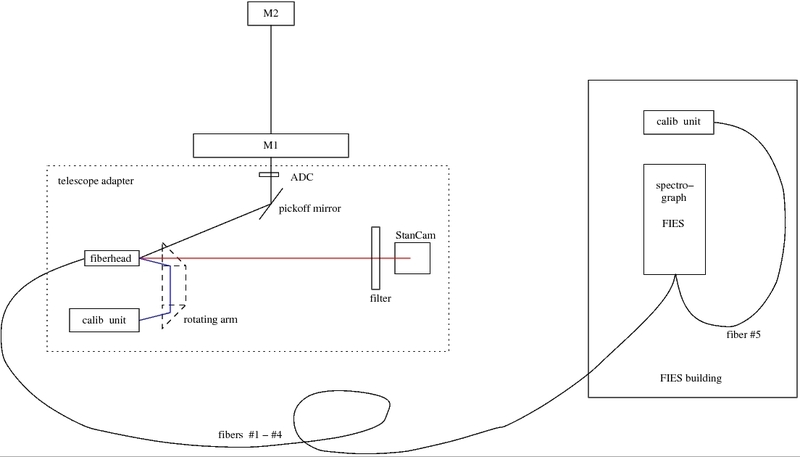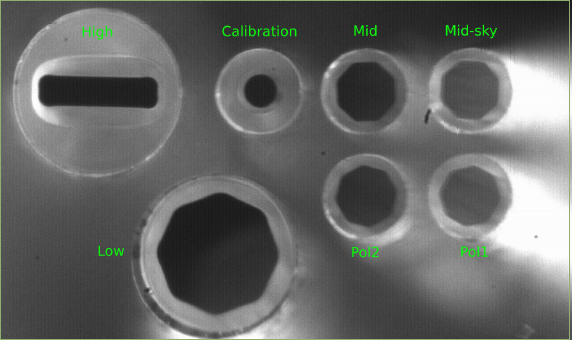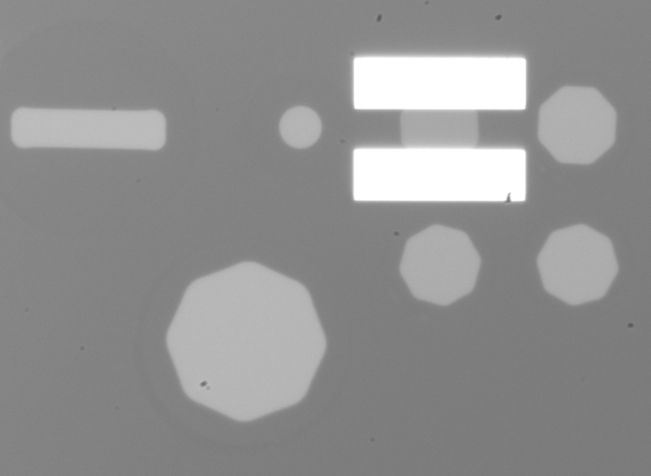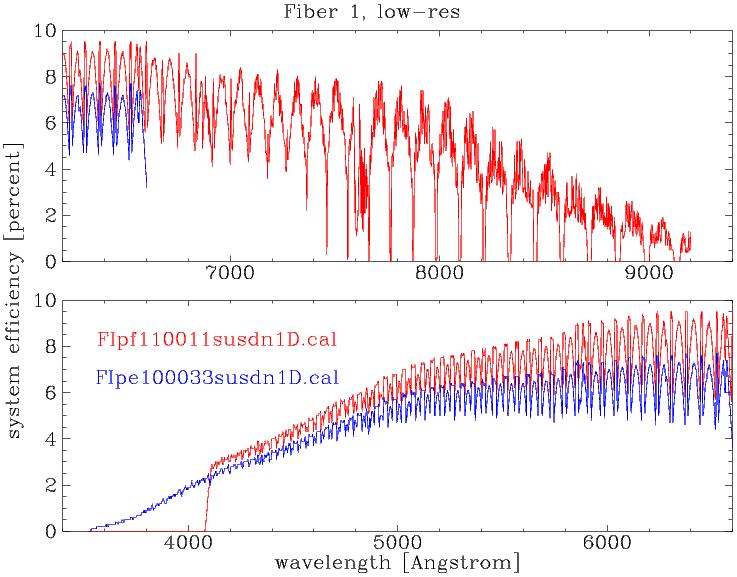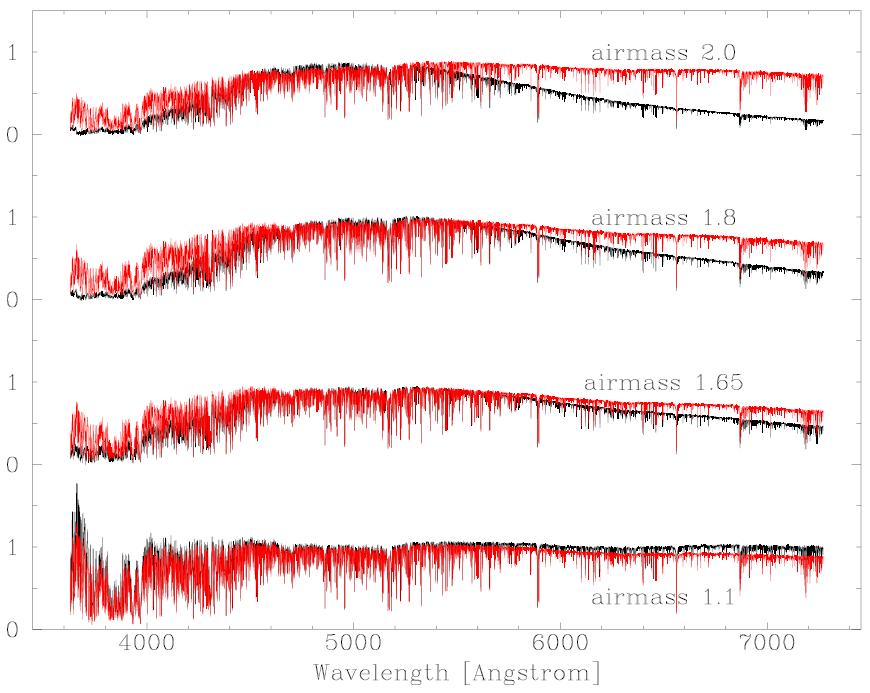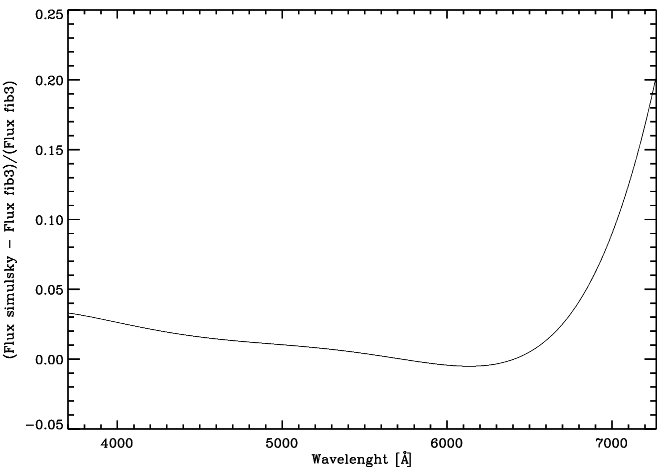
Commissioning of FIESAround the change of year 2005/2006 the high-resolution FIbre-fed Echelle Spectrograph (FIES) was moved from the observing floor to a dedicated building next to the telescope. This new location provides a stable environment to enable high-accuracy measurements to be obtained with FIES.A new CCD was installed in FIES in the autumn of 2016, providing more wavelength coverage, with almost no fringing. Over the years FIES was equiped with new fiber bundles; the latest, bundle D, was installed in July 2017. This page is targeted at (potential) users of FIES, and provides the current status of the development and commissioning of FIES. To keep this document focussed, i have taken away the information that only relates to old bundles A,B,C and the old CCD #13. See the previous commissioning document for that. Papers describing FIES FIES light-path overview Detector Spectrograph Fiber units Calibration units Wavelengths, dispersion, etc. Efficiency Inter-order distances and PSF Fringes Wavelength zero-point stability Shutter limitations Exposure meter ADC Simultaneous-sky mode Technical papers describing FIESThe FIES spectrograph report to STC (Lindberg & Frandsen, Sept 1998)FIES technical report (Lindberg, Lens-Tech, Skellefteaa, Sept 1998) Design of the the Fiber bundles B and C (Lindberg, 2011) FIES fiber injection upgrade (Stürmer et al. 2018, SPIE Vol. 10702, 107022S) FIES RV-stability test report, based on ThAr spectra only, by Jeppe Sinkbæk Thomsen, April 13, 2023 FIES light-path overviewThe light from the telescope is picked off in the telescope adapter by an approximately 45 degree mirror that can be moved into the telescope beam at any time. The light from the sky is imaged onto small adjacent mirrors on the fiber head. Each mirror has a central hole, behind which a fibre is located. The fibres are running from the telescope adapter to the spectrograph: one approximately 180 micron fibre (low-res), and three approximately 90 micron fibres (med-res sky, med-res and high-res).For target acquisition the standby imager StanCam is used. The light reflected from the small mirrors of the fibre head is imaged onto StanCam, to allow the telescope to be tweaked until the target is centered onto one of the fibres. As of 2010 the atmospheric dispersion corrector (ADC) is installed under the 'roof' of the telescope adapter, and can be swung into the telescope light path before the pickoff mirror.
Detector characteristics: FIES spectrographThe Echelle spectrograph itself is described in detail in documents that can be found on the NOT web pages.The FIES spectrograph report to STC (Lindberg & Frandsen, Sept 1998) FIES technical report (Lindberg, Lens-Tech, Skellefteaa, Sept 1998) FIES: a high resolution FIber fed Echelle Spectrograph for NOT (Frandsen & Lindberg, in Astrophysics with the NOT, 1999) FIES: The high-resolution Fiber-fed Echelle Spectrograph at the Nordic Optical Telescope (Telting et al. 2014, AN335, 41) The Echelle orders run vertically on the CCD, and in the blue region they are sufficiently far apart to allow for an interlaced calibration spectrum (ThAr or sky) to be recorded simultaneously (see below for details). The spectrograph allows a fixed wavelength setting only. Except for the focus drive and spectrograph shutter there are no motorised moving parts in the spectrograph. The spectrograph can be focused with the computer-operated focus drive, which moves some of the optics in the spectrograph camera towards or away from the CCD. The spectrograph shutter is operated by the CCD controller, and sits at the entrance of the spectrograph just behind the fibres.
The octagonal fibers are used to significantly improve
radial-velocity stability, as these provide better scrambling of the
near-field illumination at fiber exit.
Bundle D is split in two parts: 1) the telescope coupling with approximately 40m bundle run, and 2) the
bundle-to-spectrograph coupling with only 1.5m of bundle run.
The first bundle-to-spectrograph coupling, bundle combination D1, lacked functional med-res fibers.
In April 2018 we installed the 2nd bundle-to-spectrograph coupling, bundle combination D2, to
get functional med-res fibers.
The high-res fiber of both D1 and D2 had a wide rectangular fiber in
the slit plate, which was in anticipation of a double scrambler with
slicer. As the scrambler/slicer was never built to spec, the
disadvantages of the wide profile of the high-res fiber (bad
extraction redwards of 800nm; RON inhibiting faint star research; less
useful wavelength range for simultaneous recording of ThAr/FP etalon
spectrum) caused us to reconsider the lay-out of the slit plate.
In May 2019 we have installed the third bundle-to-spectrograph coupling,
with a 'traditional' slitted high-res fiber, just as in bundles A, B and C.
The profile width is now back to FWHM=4 pixels.
Differences between bundle C and D are
Additionally, bundle D provides accommodation for possible upgrades:
Above: the D1/D2 slit plate lay-out photographed by Julian Stuermer
Above: the D3 slit plate lay-out photographed by Julian Stuermer.
As the layout of the fibers on the telescope/sky is different for this new bundle D (wrt bundles ABC),
a new calibration-light feed and new calibration and masking mechanisms have been installed.
Design documents by Julian Stuermer describing the new bundle:
Spare bundle: bundle C
The fiber unit C has a total of 4 fibres: a 200 micron (Fib1, low-res
R~25000 ), a 100-micron (Fib3, med-res R~46000 ), a 100-micron with 50
micron exit slit (Fib4, high-res R~67000 ). The sky apertures are 2.5
arcsec diameter for the low-res fibre and 1.3 arcsec for the med- and
high-res fibres. The telescope and spectrograph are coupled through
the science fibres that are about 40 meters long, Polymicro FBP type.
The redundant med-res fibres allowed for a simultaneous interlaced sky
spectrum to be obtained.
Additionally there is a separate high-res calibration fibre for the
simultaneous ThAr mode. This fibre can be used in combination with target
fibres Fib3 (med-res) or Fib4 (high-res).
At the telescope end, the starlight is imaged onto the target
acquisition mirrors. The telescope pupil is imaged onto the fibre entrance
by means of a spherical microlense which sits directly behind the
aperture. Fibres are selected using a sliding mask which opens access
to either one fibre or two adjacent fibres.
At the spectrograph the 4 fibres end in a line, with a fifth fibre
that comes from a calibration unit located in the spectrograph room.
This fifth fibre allows for simultaneous ThAr spectra to be recorded.
The echellograms produced by each of the fibres are slightly shifted
in the cross-dispersion direction.
At the fibre exit, the high-res and the calibration fibre are equipped
with a slit of 50 micron width, which is needed to reach a spectral
resolution of R~67000. The slit losses are approximately 40%. The
light of all 5 fibres passes a focal extender that narrows the beam
into the spectrograph to limit the grating-overfill losses due to
focal-ratio degradation in the fibres. The lens multiplies the Fratio
by a factor 1.76, resulting in a beam of approximately F/7.5 going
towards the collimator.
Calibration unitsBottom calibration unitThe fifth fibre connects to a calibration unit housing 4 or 5 lamps, of which usually only a halogen and a ThoriumArgon are used. The latter is used for the 'simultaneous ThAr mode', in which an interlaced ThAr spectrum can be recorded while exposing on-sky. The halogen lamp is used to define and trace the orders of the Echellogram of the fifth fibre.
Top calibration unit
This unit also has a mask that blocks light to fibers that are not in use.
Normally, only access to one fiber at a time is admitted by the mask.
Due to the way the fibres are mounted at the spectrograph entrance the
Echellograms of each of the fibres are a bit shifted with respect to
each other in the cross-dispersion direction (X direction of the
CCD). At the red end the CCD cuts off the most orders for the med-res
fibre and the least for the low-res fibre: see the wavelength range
in the table below.
The spectral resolution is taken from the FWHM of arc lines at the
blaze, and can be slightly lower at the extremes of each of the
orders, and is lower on the blue side of the echellogram.
A list of order numbers and
wavelength ranges per order and dispersions per pixel can
be found here . Note that the CCD is too small
to sample all the listed orders together. With CCD15 order overlap is achieved
only below 8300 Angstrom.
System efficiencyNote that this section was written based on results with CCD13, while the new CCD15 has much enhanced throughput in the i and z bands. The Exposure-Time Calculator v2.8 is up-to-date for both bundle D and CCD15.
The plot below shows two measurements made at different nights, for a
very blue and a very red wavelength setting, using CCD13. These settings were
chosen to check the system efficiency throughout the optical domain.
The low-res fibre was used, as this fibre suffers the least from
seeing losses and losses due to atmospheric dispersion.
The system efficiency includes the full light path: atmosphere, telescope, fibres, spectrograph and the detector. For the low-res fibre the system efficiency at the blaze peaks at about 9% in the R band. In regions where there is order overlap, the combined efficiency peaks at about 9.5%. The high- and med-res fibres suffer from seeing and atmospheric dispersion losses. If not using the ADC, it is important to center the star on the fibres using a colour filter in the beam to the target acquisition camera (StanCam) to minimise the atmospheric dispersion losses in the wavelength region of interest.
Note that F3 has better throughput than F2, for all bundles.
For the old bundle C the profile FWHM of the
orders is 7.3 and 4.3 pixels for the 200 and 100-micron fibres
respectively.
Spare bundle C: this bundle allowed simultaneous-ThAr mode for Fib3 (now broken)
and Fib4, and simultaneous-sky mode for Fib3 (target) + Fib2 (sky).
At approximately 6300Å the sky spectrum starts to get
close to the target spectrum of the neighboring order.
FringesThe current CCD15 detector fringes minimally. Fringing is visible from 8000 Å and onward. At 9000 Å the peak-to-peak fringe amplitude is about 5%.Wavelength zero-point accuracyOutdated results for bundle CScientific analyses of stellar spectra obtained during a single night or during a few-night run, point at the following achievable wavelength/velocity zero-point accuracy, for bundles A,B,C:
Results show that for a series of blue-sky spectra (i.e. the solar spectrum) with 10000 e- peak flux in simultaneous-ThAr mode, with exposure time 15 seconds, a wavelength zero-point accuracy of better than 4 m/s can be achieved within a single day. We expect that the same holds for well-illuminated stellar spectra.
From a sequence of ThAr spectra taken during a continuous 28 hours
(6/10/2008), we have been able to measure the Echellogram shift due to
atmospheric air-pressure variations. The ThAr spectrum shifts by
approximately 120 m/s per millibar (HPa). Note that the diurnal
atmospheric pressure 'tide' amounts to about 1 Hpa peak-to-peak
amplitude. When using simultaneous-ThAr mode this air-pressure effect
is largely calibrated out.
Another result from scientific analysis: the RMS/sqrt(#lines)
of the wavelength solution decreases by almost 40% when going from a
5s to 20s ThAr (med-res fiber, bundle B). Apparently the penalty from
saturation and diffraction of the strong lines is less than the what
is gained from making the forest of weaker lines stronger.
For the high-res fiber F4 in Bundle C the RV accuracy does not differ
that much from Bundle B. Intra-night radial-velocity accuracy of
5-10 m/s has been observed regularly, regardless of the atmospheric
conditions.
Tests with the fiber shaker show that in cases of unstable seeing the
poor radial-velocity accuracy of the medium-resolution fiber F3 in
bundle C can be minimised. When shaking the fiber, the
radial-velocity accuracy achieved is close to that in stable seeing
conditions, and better than 10m/s. Latest results: bundle DBundle D has octagonal fibers, for much better scrambling resulting in much better RV accuracy. Hence the above results for bundle C are not representative any longer.In July 2017, over a course of 12 days, an RV RMS of 3.3 m/s was achieved for 7 observations of a K-dwarf, with S/N=70 at 6000 Å, using the high-res mode with ThAr exposures before and after each stellar exposure.
During his 10-month studentship at the NOT, that started in 2022, Jeppe
Sinkbæk Thomsen dedicated himself to a study of the RV precision
of the FIES spectrograph as obtainable from the spectrograph
itself, using many long time-series of ThAr exposures.
His results are presented here:
FIES RV-stability test report by Jeppe Sinkbæk Thomsen, April 13, 2023
The most clear conclusion of Jeppe's work was that the exposure meter
needed to be relocated (see below).
Furthermore Jeppe concludes that the FIEStool wavelength-solution
itself introduces a significant contribution to the total RV-error
that can be avoided if only low-order drifts were to be accounted for
when fitting subsequent wavelength solutions. Re-fitting the
many-parameter wavelength solution for each ThAr spectrum with
FIEStool (i.e. IRAF) showed a clear worsening in short-term precision
by ∼ 1 m/s or more.
Using the sandwich-ThAr observing method, it is reasonable to expect a
short-term spectrograph precision of 1.5-2 m/s on the average night for 15-30
minute exposures, and 1.1-1.3 m/s on nights with very stable weather.
Furthermore, during a 3-week visit in autumn 2024, Jeppe analysed a
dataset of weekly monitoring of sigma Dra, that provides 10 months
continuous standard-star data.
While using fairly standard data-reduction methods, he found that
the long-term stability of FIES is sufficient to monitor the radial velocity of
sigma Dra with 5 m/s accuracy over a 10-month period.
His results are presented here:
5 m/s ten-month stability with FIES.
The exposure meterSince autumn 2008, FIES is equiped with an exposure meter that can be used to monitor the count rates during an ongoing exposure. The exposure meter picks off light inside the spectrograph that otherwise would have fallen outside the bottom of the CCD. As the red orders are longer than the blue orders, and hence more red light is falling off the CCD, the exposure meter is more sensitive for red stars than for blue stars.The exposure meter is placed under a small pickoff prism that intercepts part of the beam at the intermediate focal plane inside the spectrograph, after the light has been dispersed by the echelle grating, but before cross-dispersion. The placement of the pickoff prism is such that no photons are lost from the part of the echellogram that is sampled by the 2kx2k CCD. Below the pickoff mirror is a shutter that can be closed to protect the photomultiplier. The shutter will open when doing a non-dark exposure on the exposure meter. The Hamamatsu H8259-01 photomultiplier is continuously providing counts to an external counter that is placed in the front room. The photomultiplier is sensitive over the full FIES range, peaking between 300-600nm. The external counter can be undestructively read out every 3-4 seconds. The accumulated counts are written to the FIES status database by the FIES computer. The status program FIESTA is providing a graphical history of the exposure meter counts based on the accumulated count in the FIES status database. The dark current of the exposure meter is on the order of 150 counts per second, and has not been accounted for in the below table.
The exposure meter was last calibrated for bundle D2 with CCD15, see
the EMCC .
Since the start of P59, our OB-generator has been updated to always
have the exposure meter switched on during regular exposures with
user-defined exposure times. The readings of the exposure meter have a
cadence of about 4 seconds, and can be used to compute a
photon-weighted midtime of an exposure. The (afternoon) calibration
script fies-calibs switches on the exposure meter during the sequence
of bias frames, to record the dark current of the exposure meter.
The readings of the exposure meter are published on a nightly basis on
http://www.not.iac.es/observing/forms/telemetry/
New location for the exposure meter (since 30-08-2023)From the numerous tests of RV precision obtained from time-series of ThAr frames that our support-astronomer student Jeppe Sinkbæk Thomsen did, we found that the exposure-meter photon counter was slightly heating the mount of the rectangular spectrograph mirror, which induced RV excursions larger than average noise.For this reason we moved the exposure-meter out of the black-box spectrograph enclosure, on 30-08-2023. The exposure meter is now placed on top of the block box, and is fed from a dedicated pick-off mirror that is placed on the main optical table. The mirror picks off from the bottom part of the dispersed beam from the collimator to the rectangular folding mirror.
The original Melles-Griot iris shutter was removed from the exposure meter.
As this shutter was a heat source, it was already electrically and mechanichally
disabled since 27 Nov 2019.
The ADC consist of a pair of rotating prisms, that when positioned
adequately can fully correct for up to approximately AM=3 . The ADC
provides an unvignetted FOV of 3.1 arcmin diameter, and hence can be
used for ALFOSC/NOTCAM on-axis spectroscopy as well.
When the ADC is in the beam, the telescope focus needs an offset of
about 560 units.
When in the beam, the ADC support arm will obscure some of the FOV of
the autoguider. This needs to be sorted out. It is expected that the
ADC obscures the top-left part of the U-shaped guide field.
When using the ADC, note that the guide star is not corrected by the
ADC. This means that gradually the target will move away from its
initial position, if the ADC is used in 'continuous mode'. This may
result in object shifts of about 1 arcsec in half an hour of guiding.
Hence caution is required when using the 'continuous mode', and for
many applications the mode 'automatic-at-preset' should be considered
instead.
Below some first results of using FIES with the med-res fiber F3, with
and without the ADC, for different airmasses. Red-drawn spectra are
taken with the ADC. All spectra are normalised to the (black) AM=1.1
spectrum taken without ADC. The spectra were obtained with the
B-filter in front of the fiber-viewing camera. For AM>1.5 (or so)
factors of 3-4 can be won at the extremes of the FIES wavelength
coverage, when using the ADC.
It was also found that the ADC is beneficial for accurate RV
measurements at high airmass. Without ADC the RV varies parabolically
as a function of echelle order, whereas this effect is much smaller
when using the ADC.
Simultaneous sky modeThe simultaneous sky mode is not available for the moment.In 2010 the possibility of making simultaneous observations of a target star and the sky background was investigated using fiber 2 and 3 (both medium resolution) in fiber bundle C. Tests were made using blue-sky spectra.
The inter-order distance
between the sky spectrum and the science spectrum decreases towards the red,
causing problems with scattered light subtraction when FIEStool is used for
the reduction. Below is shown the difference between a spectrum taken with
fiber 3 and a spectrum taken in simultaneous sky mode. At a wavelength of
6700 Å the difference between the two spectra is larger than 2.5% with
increasing discrepancy towards the red.
Calibration frames can be obtained individually for the two fibers (F2
and F3) so two sets of flats and wavelength-definition frames should be
made (in the afternoon).
Also a set of two wavelength-calibration frames (one for each fiber F2
and F3) should be made every time an update of the wavelength solution
is required, to get accurate wavelengths for both the sky spectrum and
the science spectrum.
To calibrate the throughput difference of the two fibers a set of
blue-sky exposures should be made before sunset in an ABBA sequence
(in this case F2 --> F3 --> F3 --> F2) to average out the effect of
the changing light level, when merging the frames. Exposure times of
20 seconds are appropriate for this. Make sure the telescope is
pointing AWAY from the Sun before opening the dome. Note that the
dome-lights used for dome flats doesn't provide sufficient
illumination for this calibration.
John Telting | ||||||||||||||||||||||||||||||||||||||||||||||||||||||||||||||||||||||||||||||||||||||||||||||||||||||||||||
